Three Different Styles of Angel Wings Drawing: Classic, Minimalist, and Kawaii
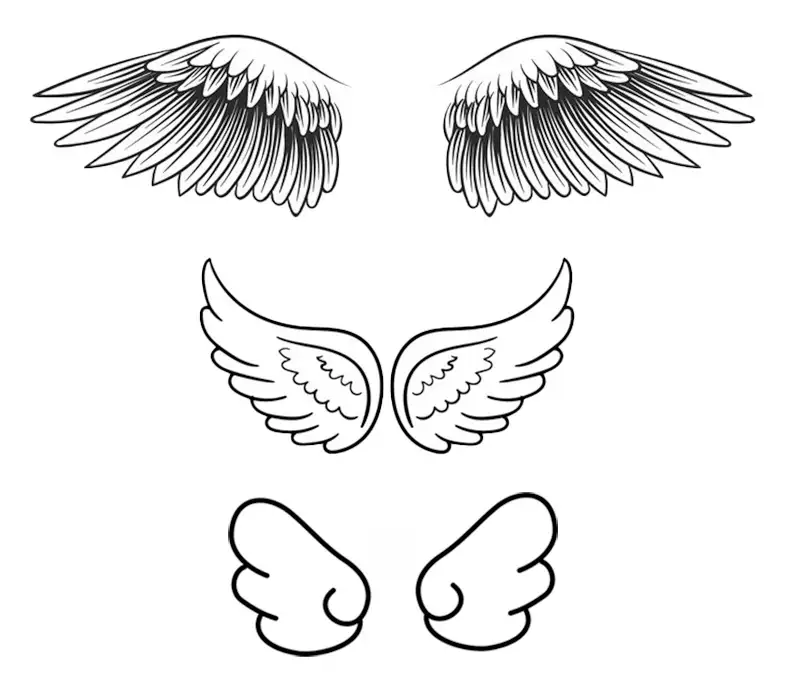
Looking to give your angels a pair of wings, but unsure of how to begin?
Have you ever tried to draw angel wings on your own? Did you realize that, in addition to the classic large wings we are most familiar with, angel wings come in a diverse array of forms? What other surprising styles might they possess?
If these questions seem a bit unclear or challenging to respond to, there’s no need to be concerned! Today, we will carefully explore the fascinating varieties of angel wings in the hand-painted world. This blog will categorize and explain them in detail through two dimensions: the overall artistic style of the wings and the feather features.
Are you ready to explore the enchanting realm of angel wings? Let’s embark on a journey to uncover new sources of inspiration!
The Overall Artistic Style
Classic Style

This is the most classic angel wing! This style of wing is usually symmetrical, with rounded and full feathers and a multi-layered covert structure.
The feathers are mostly radiating from the shoulder blade, with the secondary feathers curled inward and the flight feathers drooping in a fan shape.
The wings can be divided into the following three types according to their direction.
Spreading Wings

- Features: Feathers radiate outward in a fan or semicircle from the base of the wing (near the shoulder blade or the set “growth point”).
- Visual experience: sacred, solemn, sheltering, stable, powerful, classic angel image.
- Application: Mostly used to express guardian angels, advent angels, angels in a static or display state.
- Subdivision: It can be regular, symmetrical radiation, or slightly wavy or slightly irregular to increase the sense of nature.
Flying Upward Wings
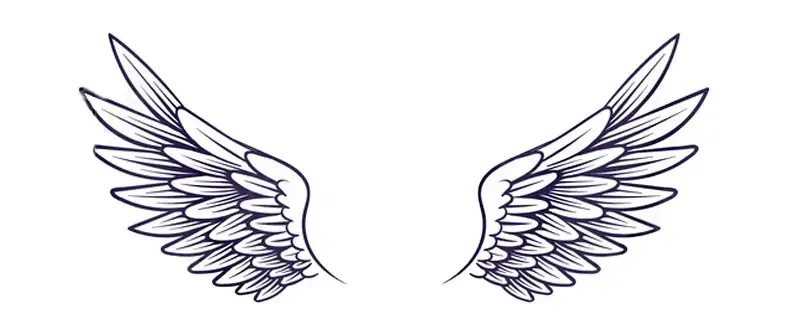
- Features: The tips of the feathers or the overall tendency of the feathers to rise, tumble, or flutter upwards, as if it is blown upward by the wind or have the power of lightness and rise.
- Visual experience: Lightness, elegance, fantasy, sacredness, rising feeling, gentleness, spirituality.
- Application: It can be used to show a very gentle and healing angel; to express the state of soul ascending and lightly floating; or to create a dreamy and beautiful atmosphere. Commonly used in a feminine or soft style angel design.
Folded Wings
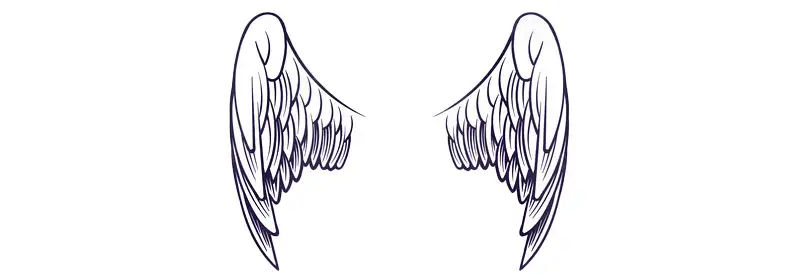
- Features: Feathers are arranged in layers, like fish scales. The upper feathers partially cover the lower feathers, and the direction is basically the same (usually backward and downward or diagonally backward), creating a tight and orderly surface.
- Visual experience: Exquisite, gorgeous, protective, elegant, and orderly.
- Application: Often used to express noble, gorgeous, and decorative angles, or the arrangement of feathers when the wings are folded or half-folded. Especially in hand-painted pieces, this arrangement can effectively showcase the texture and details of the feathers.
Sickle-Shaped Wings
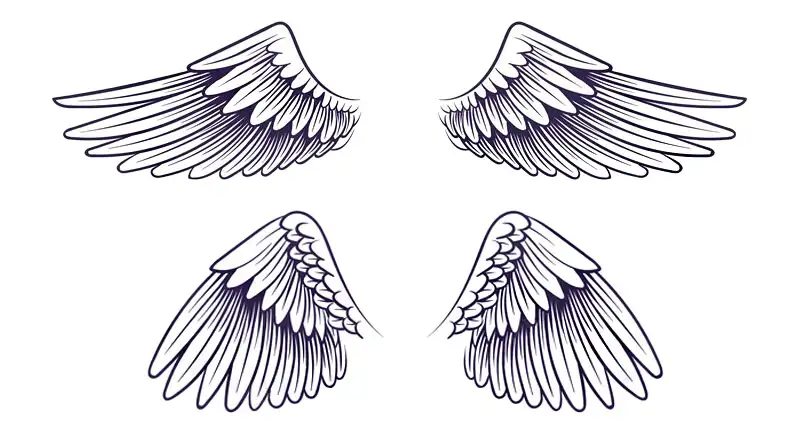
- Features: All or most of the feathers are closely arranged in one direction (usually backward or diagonally backward), forming smooth and flowing lines.
- Visual experience: Sense of speed, movement, power, and agility.
- Application: Expressing angels in flight (especially high-speed dives or sprints), fighting angels, or designs that emphasize the sense of speed.
Minimalist Style

If you’re new to wing painting or if you prefer a clean, sharp visual expression, then the minimalist style is definitely ideal for you! This style breaks away from the complicated feather depiction and uses only simple, smooth lines to outline the core skeleton and form of the wing, simplifying and conveying the wing’s charm with precision.
According to the flow direction of the wing lines, we can categorize them into three forms.
Spreading Wings

As a simplified version of a classic wing, the lines radiate elegantly from the shoulder blade area to form a clear fan-shaped outline. It abandons dense feather details and only retains the basic direction of the feather arrangement, giving a clean and orderly visual effect.
Flying Upward Wings

Contrary to the sickle-shaped wings, the flying upward wings point upwards as a whole, with simple and smooth lines drawing the moment when the wings are lifting upwards or levitating lightly, full of dynamism and light and airy visual sensation.
Sickle-Shaped Wings
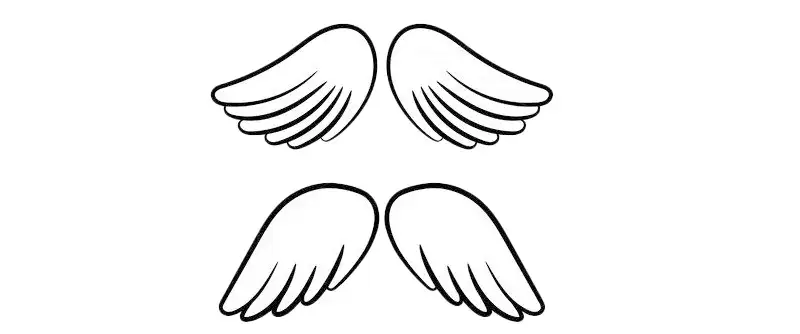
The simple version of the sickle-shaped wings, as shown in the picture above, features a wing line that points downward or diagonally downward, keeping just the outline of the feather direction and the fundamental arrangement of the feathers. This is straightforward but still keeps the appeal that a wing should possess.
Kawaii Style
Do you want to add a touch of childlike innocence to your character? Wings in Kawaii style are your ideal choice! Instead of realistic bone structure and sharp lines, these wings embrace a visual language of extreme softness and roundness.
The characteristics of this style are as follows.
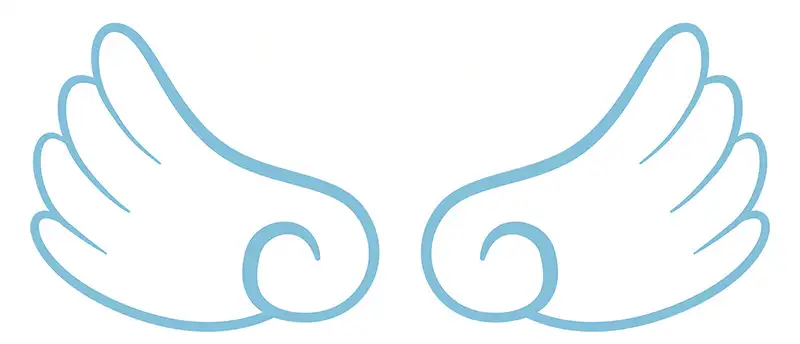
- Fluffy like clouds: The overall outline is like soft cotton candy or fluffy clouds.
- Short and rounded: The feathers are short and full, with round and cute feather tips, without any sharpness.
- Dreamy colors: Often paired with macaron colors – classic pure white, dreamy light pink, fresh sky blue, etc., to create a sweet and dreamy atmosphere.
Common Kawaii style wings can be roughly divided into two types.
Spreading Wings
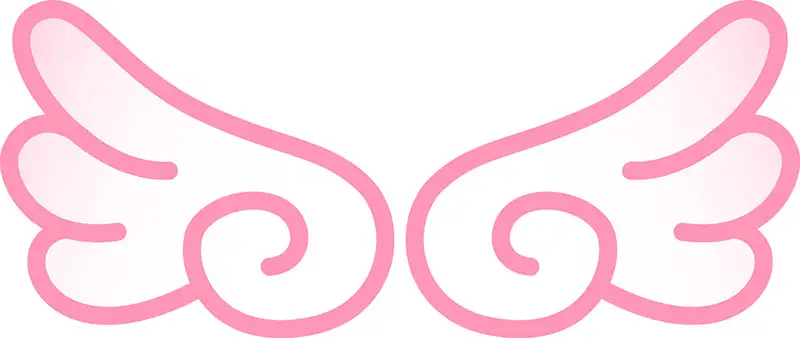
This is the most common and representative form of the Kawaii style! The short and round feather outline often spreads out lightly from the center in a soft swirl and radial shape wings. This arrangement naturally carries a sense of innocence and curiosity, and the essence of the Kawaii style can be sketched out with a few simple strokes.
Sickle-Shaped Wings
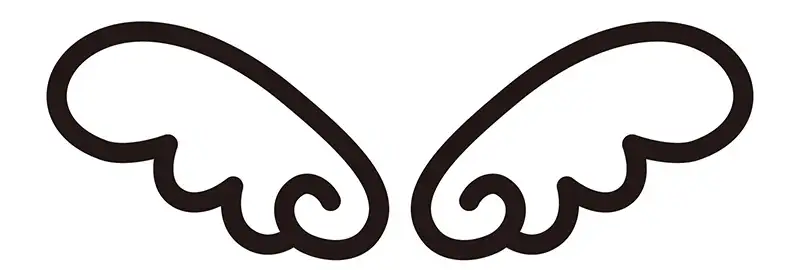
The sickle-shaped wings use smooth and rounded curves, with the wings naturally drooping or gently folded back. The key lies in the softness of the lines and the fullness of the form, avoiding any hard turns.
Feathers Features
The soul of a wing lies not only in the overall silhouette, but also in the details! By looking at the shape of the outermost feathers of the wing, we can refine them into two main types, which directly influence the visual texture and overall aura of the wing: V-shaped feathers and U-shaped feathers.
V-Shaped Feathers
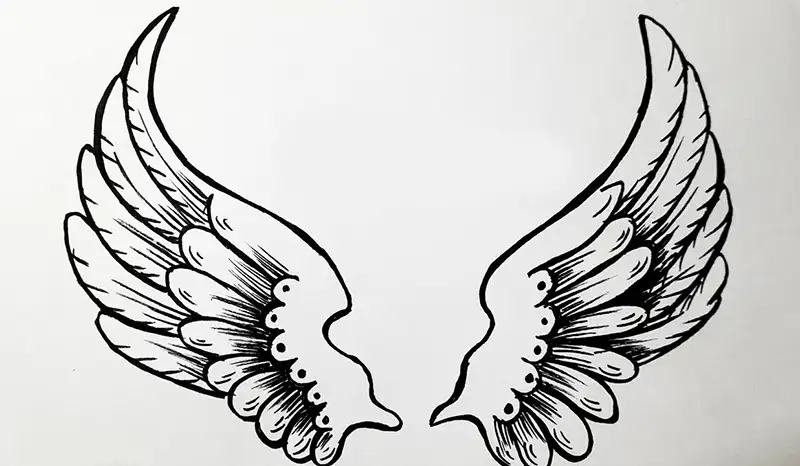
The end of the feather shows a clear V-shaped opening with a sharp contour line, like a serrated edge or a sharp knife tip. This type of feather conveys a sense of hardness, sharpness, and even a slight aggressiveness. It is an iconic element of the classic style (especially for the expression of stately, powerful archangels or fighting angels), emphasizing their transcendent majesty and power. However, it is also occasionally used in minimalist styles to inject a hint of coolness or harshness into clean lines through sharp V-shaped feathers.
U-Shaped Feathers
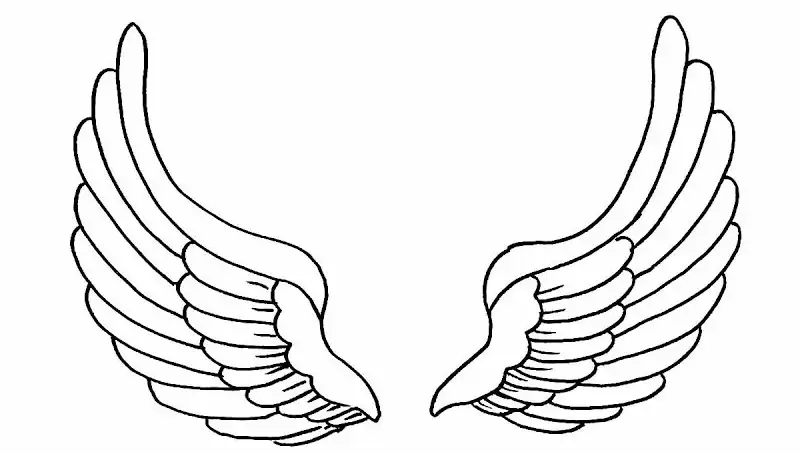
The ends of the feathers form a full and smooth U-shaped or semi-circular arc, with a rounded outline without edges and corners, similar to an ellipse, or a soft cloud edge. This feather shape creates a soft, fluffy, gentle, and harmless feeling, and the feathers appear light and elastic. It is the popular choice for minimalist style and Kawaii style. It is also sometimes seen in classic style, used in gentle, protective, or more feminine angel images, adding a touch of elegance and affinity.
Conclusion
Through the above discussion, we can clearly understand that the hand-painted style of angel wings can be systematically divided into two dimensions: overall style and feather features. In terms of overall style, they can be divided into classic style, minimalist style, and Kawaii style. Secondly, under each overall style, the specific forms of wings can be further subdivided according to their orientation and unfolding. Such as spreading wings, folded wings, sickle-shaped wings, and so on. In addition, in terms of the feather features, they can be divided into a sharp V-shape and a rounded U-shape.
Understanding and mastering the differences and characteristics of these wing shapes will help you paint better. It will help you express your design intention more precisely and create an angel image with different shapes and more aesthetics.
If you are interested in drawing an angel yourself, welcome to read our easy angel drawing guide! This guide will show you how to draw a simple angel step by step to create your own angel artwork.
